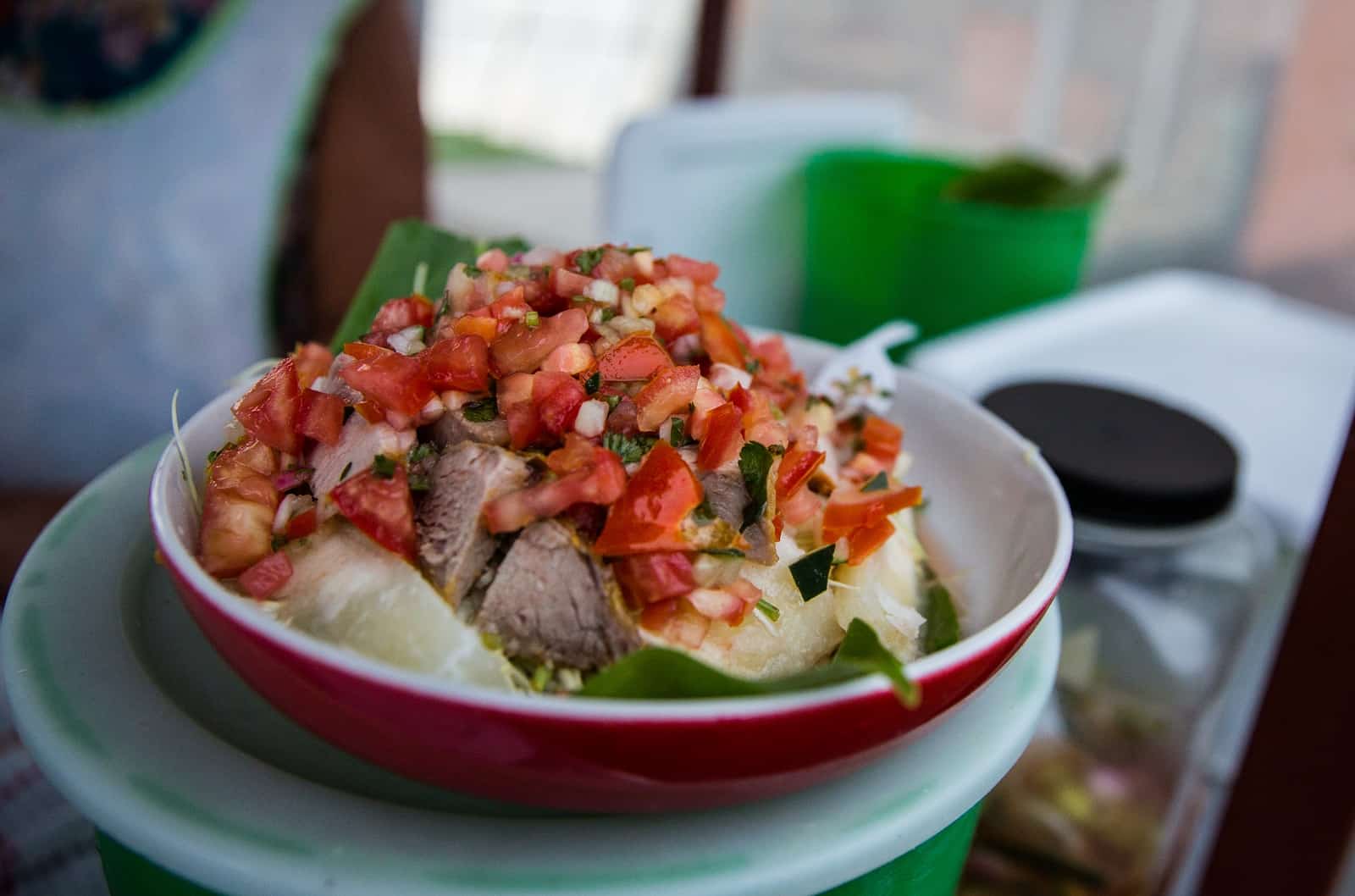Food in Central America doesn’t get much more complicated than rice, beans and tortillas. Yet, add in some patacones in some countries and pupusas in others, and each country begins to take on a flavor of its own.
From the gallo pinto of Costa Rica and the vigorón of Nicaragua to the pupusas of El Salvador and the subanick of Guatemala, there are enough traditional dishes to keep regional visitors busy and full trying new foods.
Born out of the fusion of Spanish and indigenous diets, Central American cuisine is simple in ingredients but diverse in preparation, taking on different forms from country to country.
The little crossover that exists has inspired some controversy. The famous “gallo pinto wars” between Costa Rica and Nicaragua, which have been fought in cyberspace and other mediums for years, revolve around the origin of the rice-and-beans dish that gets its name from a speckled rooster. Every so often, proud nationalists in either country will hold contests to prove they can cook up the best pinto.
And although much of Central America’s cuisine is based on just a few local staple crops – plantains, rice, corn, peppers, onions and beans – the options for variety are many.
Traditional Central America Food by Country
Belize: Rice and beans served with meat, shrimp Creole, fish fillet with baked potato.
Guatemala: Subanick, red peppers with three types of meat, served with rice and tamales; enchiladas, fried tortillas served with greens and juicy meats; pechuga de pollo al coco, chicken breast flavored with coconut and various fruits.
El Salvador: Pupusas, thick tortillas filled with meat, beans or cheese; tamales, cornmeal with meat or vegetables, wrapped in a plantain leaf; yuca frita, fried cassava; pasteles de chucho, beef patties.
Honduras: Baleadas, folded tortillas stuffed with cheese, meats, beans or eggs; pincho de pollo, chicken skewers; bolas de queso, cheese balls.
Nicaragua: Indio viejo, a soup with onions, tomatoes, shredded meat and cornmeal; nacatamal, a large tamale with meat, garlic, onion, plantain and a variety of spices; vigorón, cabbage salad, boiled cassava and chicharrones (fried pork).
Costa Rica: Gallo pinto, rice-and-beans breakfast dish served with eggs, cheese or sausage; casado, rice, beans, salad, fried ripe plantains and your choice of meat; olla de carne, beef soup with a variety of tubers and vegetables.
Panama: Plato típico, chicken with rice, roasted pork, tamale, fried plantains; pastel de yuca, cassava pie with chicken, corn, capers and raisins; guacho de mariscos, fresh seafood soup with rice; tamal de olla, chicken tamale.
“It’s very easy to be creative with the food,” said Ronaldo Maldonado. “Though it’s a very basic and natural food, there are different flavors and preparation techniques.” Yerick Zamora noted the colors of the food, which carry an energetic mix of yellows, reds and greens.
“The food here is flavorful and vibrant in colors,” he said.







